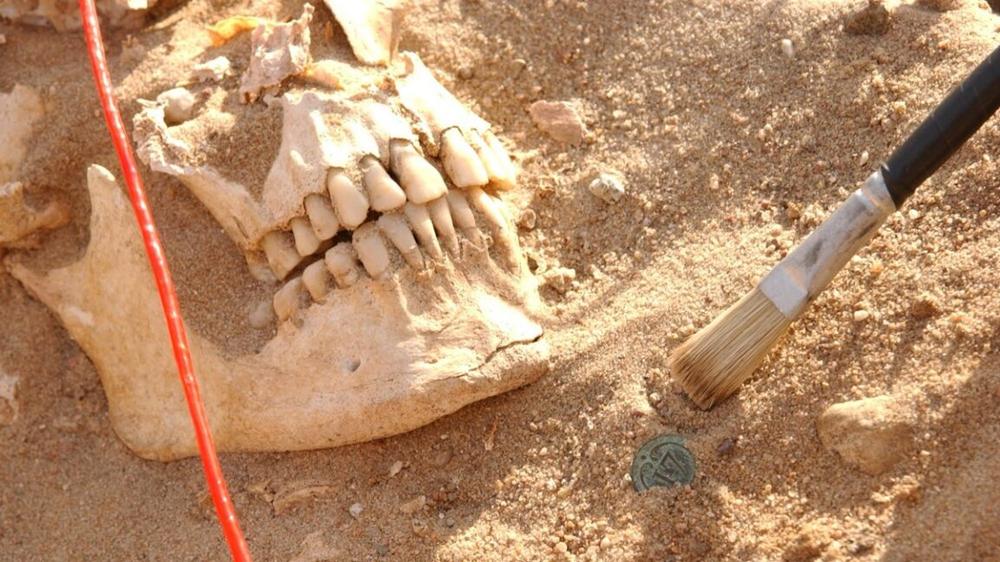In 1812, Napoleon Bonaparte led a disastrous military campaign into Moscow. The death toll was devastating: Out of some 615,000 men, only about 110,000 survivors returned. (Napoleon abandoned his army in early December to return home on a sled.) Roughly 100,000 of the casualties died in battle, while as many as 300,000 perished from a combination of the bitter cold of Russia’s notoriously harsh winter, starvation, and disease.
Scholars have debated precisely what kinds of diseases ravaged Napoleon’s troops. New DNA analysis of some solders’ remains has revealed the presence of two pathogens in particular, according to a new paper published in the journal Current Biology. The first is Salmonella enterica, which causes paratyphoid fever; the second is Borrelia recurrentis, which is transmitted by body lice and causes relapsing fever. (A preprint of the paper appeared on bioaRxiv in July.)
“It’s very exciting to use a technology we have today to detect and diagnose something that was buried for 200 years,” said co-author Nicolás Rascovan of the Institut Pasteur. “Accessing the genomic data of the pathogens that circulated in historical populations helps us to understand how infectious diseases evolved, spread, and disappeared over time and to identify the social or environmental contexts that played a part in these developments. This information provides us with valuable insights to better understand and tackle infectious diseases today.”
Contemporary accounts, including personal memoirs, of the illnesses affecting Napoleon’s soldiers mention diarrhea, dysentery, fevers, pneumonia, jaundice, and especially typhus, commonly known at the time as camp fever. Evidence for the latter has been bolstered by research identifying body lice among soldiers’ remains—the primary vector for typhus—specifically, a 2006 DNA analysis of remains recovered in 2001 from a mass grave in Vilnius that found signs of the typhus pathogen R. prowazeklii and trench fever pathogen B. quintana, although the findings weren’t conclusive. This was followed by a 2011 study that detected ancient DNA of the Anelloviridae family of viruses in a dental pulp sample recovered from Kalingrad.
State-of-the-art methodologies
Rascovan and his co-authors note in their paper that the 2006 study relied upon outdated PCR-based technologies for its DNA analysis. As for the virus family detected in the Kalingrad dental pulp, they argue that those viruses are both ubiquitous and usually asymptomatic in humans—and thus are unlikely to be the primary culprits for the diseases that wiped out the French army. So Rascovan’s team decided to use current state-of-the-art DNA methodologies to re-analyze a different set of remains of Napoleonic soldiers who died in Vilnius.
“In most ancient human remains, pathogen DNA is extremely fragmented and only present in very low quantities, which makes it very difficult to obtain whole genomes,” said Rascovan. “So we need methods capable of unambiguously identifying infectious agents from these weak signals, and sometimes even pinpointing lineages, to explore the pathogenic diversity of the past.”
An 1812 report from one of Napoleon’s physicians, J.R.L. de Kirckhoff, specifically noted typhus, dysentery, and diarrhea after the soldiers arrived in Vilnius, which he attributed to large barrels of salted beets the starving troops consumed, “greatly upsetting us and strongly irritating the intestinal tract.” Rascovan et al. note that such symptoms could accompany any number of conditions or diseases common to 19th-century Europe. “Even today, two centuries later, it would still be impossible to perform a differential diagnosis between typhus, typhoid, or paratyphoid fever based solely on the symptoms or the testimonies of survivors,” the authors wrote.
Over 3,200 individual remains, almost all men between the ages of 20 and 50, were excavated from the mass grave at Vilnius. Rascovan et al. focused on 13 teeth from 13 different individuals. To compensate for the degraded nature of the 200-year-old genome fragments, co-authors at the University of Tarta in Estonia helped develop a multi-step authentication method to more accurately identify pathogens in the samples. In some cases, they were even able to identify a specific lineage.
Four teeth tested positive for S. enterica and B. recurrentis, providing the first direct genetic evidence of two infectious agents that had not previously featured heavily in the scientific conversations about the likely diseases afflicting Napoleon’s 1812 army. Conspicuously lacking was any sign of R. prowazeklii or B. quintana, contradicting the 2006 study.
However, given the small sample size, the authors note that this does not completely rule out the presence of typhus and trench fever or other possible diseases among the soldiers who perished at Vilnius. Determining that would require analysis of many more samples. That said, “A reasonable scenario for the deaths of these solders would be a combination of fatigue, cold, and several diseases, including paratyphoid fever and louse-borne relapsing fever,” the authors concluded. “While not necessarily fatal, the louse-borne relapsing fever could significantly weaken an already exhausted individual.”
Sally Wasef, a paleogeneticist at Queensland University of Technology in Australia, told New Scientist that given the low quantities of recovered microbial DNA, “the results are more suggestive than conclusive.” However, she added, “This kind of work has strong potential to clarify the role of disease in past population declines, particularly where written records are incomplete or biased.”
DOI: Current Biology, 2025. 10.1016/j.cub.2025.09.047 (About DOIs).

 Battlefield 6 Season 1 patch overhauls movement, weapon balance, and visuals
Battlefield 6 Season 1 patch overhauls movement, weapon balance, and visuals